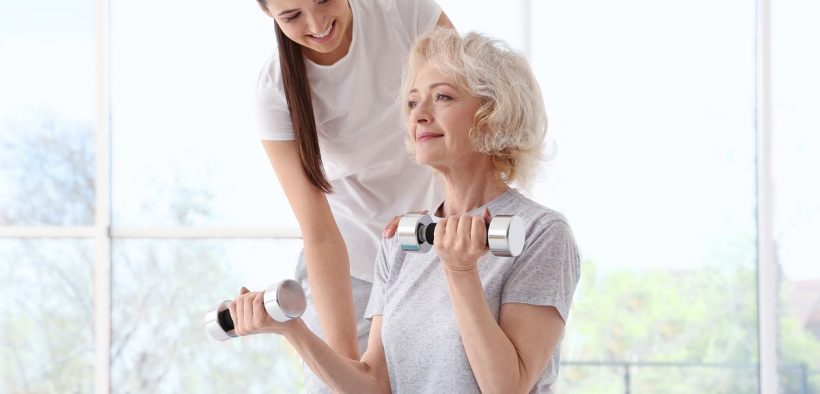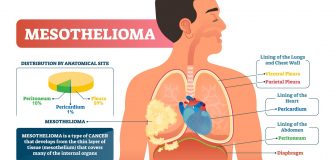What To Do If An Elderly Person Experiences A Serious Fall
Share

Unfortunately, fatal falls involving the elderly are dramatically increasing. Not only is this a problem, but the Los Angeles palliative care staff also points out that this type of fall usually happens without warning. And that is what many family members say to the staff at hospice Pasadena, “It just happened so suddenly.” They remember seeing a loved one on their feet one minute to then being on the floor the next. More often than not, the fallen person has experienced some traumatic injury.
The Centers for Disease Control (CDC) and Los Angeles hospice declare that fatal falls in the elderly are increasing. Falls are the leading cause of injury in Americans over the age of sixty-five. Most of us can think about someone we know who has recently experienced a fall. It could be anyone you know who had slipped on a slippery surface such as a shower floor or black ice and had to wait hours before help arrived.
What Are The Statistics On Elderly Falls?
Medical professionals at palliative care Los Angeles tell us that as the population ages, the rate of falls increases. Most of the time, falls happen because of broken bones or even traumatic brain injury. These types of injuries can change an older adult’s life as well as their family’s. After a fall, there can be long durations at the hospital, surgery, as well as months of recovery.
Here are a few more details on the current track record on elderly falls:
- The CDC says about 29 million falls in seniors happen per year.
- Around 800,000 people have to go to the hospital after a fall.
- The National Institute of Aging has announced that one out of three people over 65 falls each year.
- Three million of these falls call for a visit to the emergency room.
- The Health of Aging foundation notes that older women are more likely to break a bone in a fall.
- Most of the time, the hip bone is broken.
- Falls are the main reason why the elderly lose their independence.
- When you have experienced a fall, you are more likely to have a fall again. Two out of three seniors who have fallen will fall again in the next year.
- Although women are more likely to be injured, men are more likely to die due to a fall.
What Triggers The Risk Of Falls With The Elderly?
There are a few factors experts at palliative care Los Angeles inform us about when it comes to the cause of elderly falls. Falls can happen at any time and any place, but they usually occur at home for the most part. Here are ten risk factors for falling.
Poorer eyesight: Eye conditions such as cataracts and glaucoma can make it more difficult to see. Alterations in vision can increase the possibility of falling.
Muscle weakness: Weak muscles can make moving from a sitting position to a standing one very challenging. As a result, a person could feel shaky limbs while walking or tired.
Medications: Pharmaceutical treatments such as pain medications and sleep aids, whether prescribed or over-the-counter, can lead to the liability of a fall. The National Institute of Aging claims that the more medications an individual takes, the more chances they could fall.
Lethargic Reflexes: The ability to keep your balance is all part of staying on your feet. When reflexes are slow, it leads to a lengthy response. The person could injure themselves before they even respond.
Foot Issues: Foot pain and dangerous footwear can increase the hazard of falling.
Complications with Balance and Movement: When a person has problems balancing, it makes it easier to fall.
Blood Pressure Plunges When The Person Stands Up: If a person suffers from Postural Hypotension, they could feel weakness or dizziness when standing up. This short-term lightheadedness may result in a fall.
Ongoing Health Conditions: Diseases such as diabetes, heart disease, and thyroid disease can lead to a loss of sensation in a person’s feet, affecting balance.
Tripping Hazards: It is crucial to reduce the risk of dangers in the home. Even the most minor things on the floor could be dangerous, such as books, paper, clothing, and shoes. Throw rugs are infamous for slipping under your feet. Also, pets can cause unexpected falls with sudden and abrupt movements.
Confusion: Confusion is another cause for falls, whether in a new environment or a loss of memory. A majority of falls happen in the middle of the night on the way to the bathroom. Sometimes it is very bothersome for the elderly to find themselves in the middle of the night in a room they aren’t familiar with. A person’s impaired judgment can induce a fall.
How To Prevent The Elderly From Falling
Stay Hydrated. Consume five to eight glasses of water per day.
Eat Right. Eating a healthy diet can reduce a person’s risk of a fall.
Get Moving. Do weight training a few days per week to strengthen your muscles. Walk between 15 to 30 minutes a day. And don’t forget to stretch.
Improve Home Safety. Ensure to evaluate your or your loved one’s home for any potential hazards around the house that could cause a fall.
Wear Sensible Shoes. If you or your loved one are prone to falls, wear proper footwear. Avoid heels and flip-flops. The National Institute of Aging suggests wearing shoes with the following features:
- Rubber-soled
- Lace-up
- Non-skid
- Low-heeled
Contact Local Organizations. Get in contact with local resources that offer fall prevention or balance classes.
Talk to a Doctor. Speak to your loved one’s doctor after a recent health change or a severe fall. They could need an Occupational Therapist or a Physical Therapist. Also, these therapists can help with their individual needs at home and provide extra support to avoid future falls.


